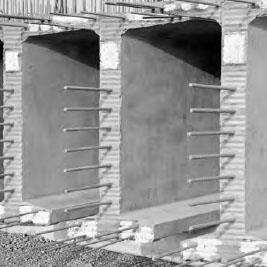StaticsStatics |
What are composite materials? |
As was mentioned above, brittle materials like concrete have larger compressive strength than tensile strength. For that reason reinforcing bars (rebars) made of steel are embedded in concrete. The steel supports the concrete when it is under tension, reducing its tendency to crack and thus keeping it from failing.
Composite materials have been used since ancient times when straw was added to clay to make bricks.
The most recent composite materials use carbon fibres (less than 0.01 mm in diameter) that are light in weight (they’re made of pure carbon) with very high tensile strength but low compressive strength. They are added to plastics to make them more rigid (increase their Young’s modulus) without adding weight. Golf club shafts are often made of a plastic filled with carbon fibres, giving the shaft great strength with low weight. By varying the amount of carbon fibres the flexibility of the shaft can be changed.
Although it isn’t really a composite, glass can be made to be less brittle. The key idea is to keep the surface under compression at all times so it won’t crack. Glass sheets are made from the fluid state by cooling. If the surfaces are cooled quickly with strong blasts of air it produces a form of glass called case-hardened that was used for shatterproof lenses in eyeglasses. In the 1970s a chemical method was invented that could be used on cold glass. It involves putting the glass into a bath of potassium salts. The potassium replaces sodium in the surface layers of the glass. The larger potassium atoms expand the surface layers so that the interior portion of the glass compresses the surface, keeping it from developing cracks.

